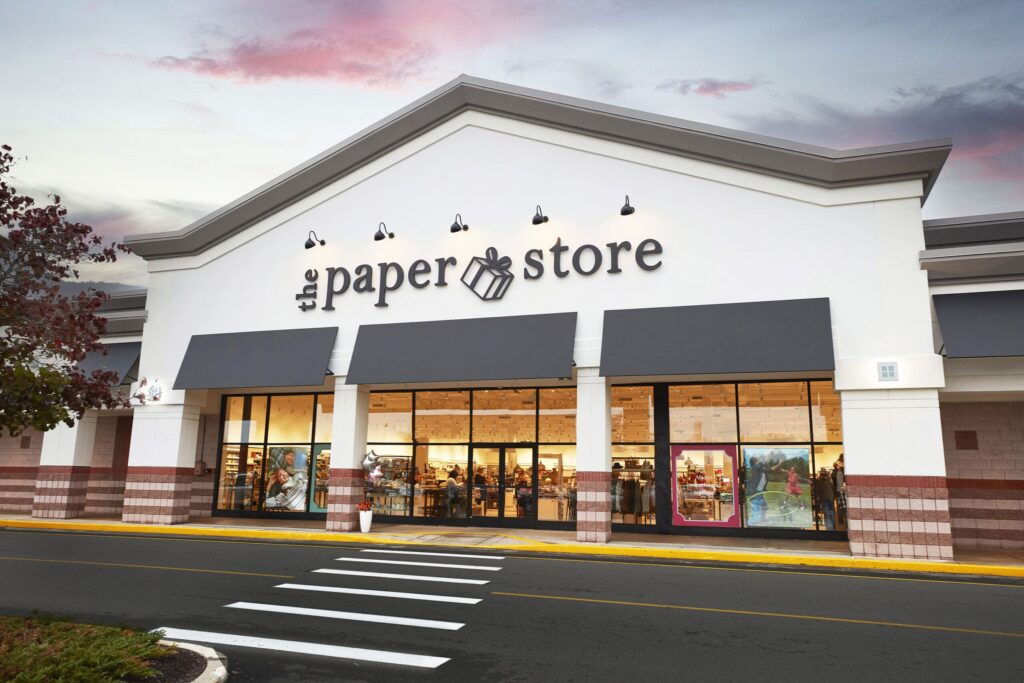The Paper Store lost margin from shoppers doubling up on promotions. Its new point-of-sale system reduces promotion confusion, makes its operational team more efficient and keeps shoppers moving through checkout.
Promotions are an effective tool many marketers use to attract consumers to the brand and then on to buy.
The Paper Store has a robust promotional strategy, but it struggled to efficiently and accurately execute those offers.
The 60-year-old retail chain operates roughly 100 stores and has about 500,000 active SKUs. At any time, it could have dozens of promotions running across its products, which includes gifts, stationery, home decor, seasonal items, apparel and accessories.
The Paper Store’s complex promotional strategy
It often distributes online coupons, physical coupons and runs seasonal promotions, such as buy an Easter pail and receive 20% off all the products shoppers put in the pail. What’s more, some of the brands its sells have restrictions and cannot be included in a promotion.

In short, The Paper Store’s promotional strategy is complex. And its technology stack could not handle the complexity, said Craig Hewitt, chief operating officer of The Paper Store.
The Paper Store would set up a file with the promotion, run a trial of it in a test store, before sending the file to each store’s point-of-sale system, said director of retail systems Brian McGinty.
“It’s a set process that happens regularly, but there’s really no confirmation did it get to the store? Did it apply at the store? Is it going to actually trigger what it’s supposed to,” McGinty said.
A cumbersome shopper and employee experience
What’s more, training associates on the point-of-sale system took about three hours. And even after that training, employees struggled to accurately provide the correct promotional price to shoppers. Often, in-store associates would need to scan a print-out barcode of discounts in order to provide shoppers with what they thought was the right price.

Shoppers also tried to double up on promotions, and because associates weren’t confident the system provided the right price, employees would agree with the shopper. This means that The Paper Store lost margin on a sizeable share of transactions, Hewitt said.
With employees having to clarify if all the promotions were correct, checking out each customer took longer than necessary, Hewitt said.
Getting the transaction right and fast matters to The Paper Store, as more than 90% of its revenue is in store. Plus, it generates 43% of it is from Thanksgiving through Christmas.
The Paper Store selects Jumpmind for its POS
To rectify all these issues, The Paper Store overhauled its in-store point-of-sale system and the technology that runs its promotions to point-of-sale vendor Jumpmind.
The upgrade went live in May 2024. It took five weeks to update its 92 stores with 800 Apple devices. Each store now has four to six devices as new registers, and two iPads and two iPhones that are available for staff to use for other tasks.
The new system has eliminated promotional complexities. The Paper Store can set up a promotion in one central system, and the stores automatically receive it without having to send files down to the on-site hardware. Some promotions used to take six or eight hours to program, which now can be done in less than an hour, McGinty said.

“We’ve cut down our time on setting promotions up drastically with this new tool,” McGinty said.
Plus, if there is an issue with a store not discounting an item correctly, the central system can easily rectify it without disrupting that store’s operations.
“If something does get missed — so we’re now discounting an item that we shouldn’t be or we didn’t want to — we can fix that so much faster,” McGinty said. “We get the reports back and it’s the one place we change it and all the stores immediately are updated.”
Faster in-store checkout for all
Training associates now is only five to 30 minutes, which is much shorter than the previous three hours.
Without confusion at checkout, associates can move shoppers through the line faster, which is key at the busy holiday time. During the holidays, the average Paper Store shopper is buying 14 units per transaction, up from its typical three units, Hewitt said.
Aesthetically, the new system looks sleek, and gives shoppers the impression that The Paper Store is a modern brand, Hewitt said.
The update was about $2 million, which includes all the new hardware for the stores and the cloud-based software, McGinty said.
Currently, the promotional tool is only managing its store promotions. After the Paper Store updates its ecommerce front-end it plans to have the tool integrated online as well.




